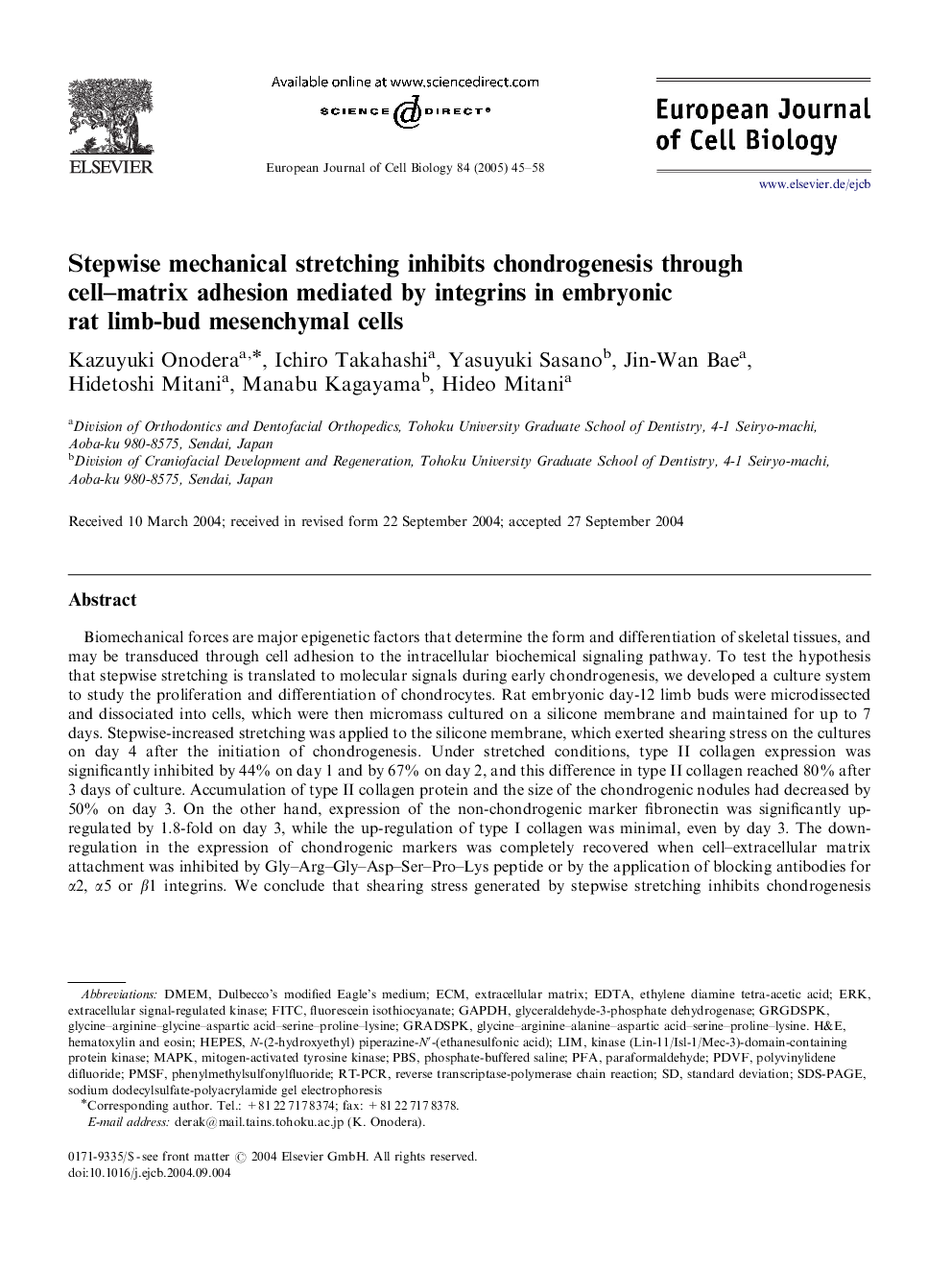| Article ID | Journal | Published Year | Pages | File Type |
|---|---|---|---|---|
| 9912483 | European Journal of Cell Biology | 2005 | 14 Pages |
Abstract
Biomechanical forces are major epigenetic factors that determine the form and differentiation of skeletal tissues, and may be transduced through cell adhesion to the intracellular biochemical signaling pathway. To test the hypothesis that stepwise stretching is translated to molecular signals during early chondrogenesis, we developed a culture system to study the proliferation and differentiation of chondrocytes. Rat embryonic day-12 limb buds were microdissected and dissociated into cells, which were then micromass cultured on a silicone membrane and maintained for up to 7 days. Stepwise-increased stretching was applied to the silicone membrane, which exerted shearing stress on the cultures on day 4 after the initiation of chondrogenesis. Under stretched conditions, type II collagen expression was significantly inhibited by 44% on day 1 and by 67% on day 2, and this difference in type II collagen reached 80% after 3 days of culture. Accumulation of type II collagen protein and the size of the chondrogenic nodules had decreased by 50% on day 3. On the other hand, expression of the non-chondrogenic marker fibronectin was significantly up-regulated by 1.8-fold on day 3, while the up-regulation of type I collagen was minimal, even by day 3. The down-regulation in the expression of chondrogenic markers was completely recovered when cell-extracellular matrix attachment was inhibited by Gly-Arg-Gly-Asp-Ser-Pro-Lys peptide or by the application of blocking antibodies for α2, α5 or β1 integrins. We conclude that shearing stress generated by stepwise stretching inhibits chondrogenesis through integrins, and propose that signal transduction from biomechanical stimuli may be mediated by cell-extracellular matrix adhesion.
Keywords
ECMPMSFPFAERKRT-PCRGAPDHLIMHEPESFITCDMEMPBSMAPKDulbecco's modified Eagle's mediumEDTAethylene diamine tetra-acetic acidSodium dodecylsulfate-polyacrylamide gel electrophoresisSDS-PAGEstandard deviationIntegrinShear stresspolyvinylidene difluoridefluorescein isothiocyanatePhenylmethylsulfonylfluorideExtracellular matrixPhosphate-buffered salineHematoxylin and EosinReverse transcriptase-polymerase chain reactionparaformaldehydeStretchChondrogenesisextracellular signal-regulated kinaseglyceraldehyde-3-phosphate dehydrogenase
Related Topics
Life Sciences
Agricultural and Biological Sciences
Plant Science
Authors
Kazuyuki Onodera, Ichiro Takahashi, Yasuyuki Sasano, Jin-Wan Bae, Hidetoshi Mitani, Manabu Kagayama, Hideo Mitani,
